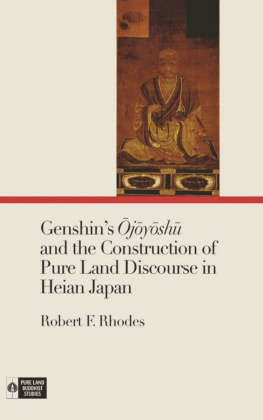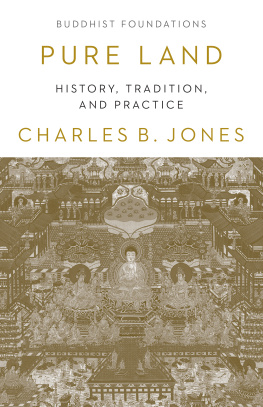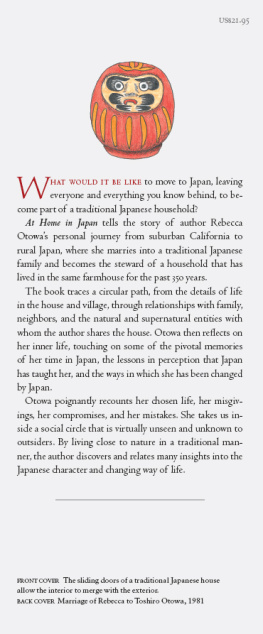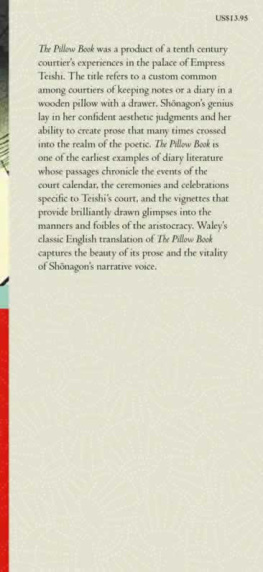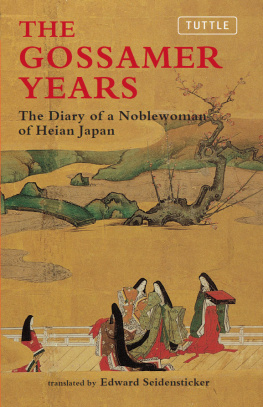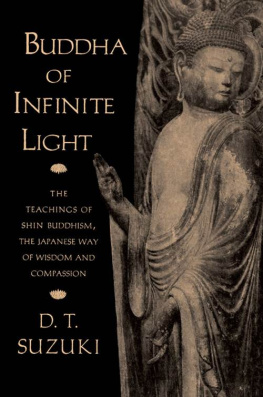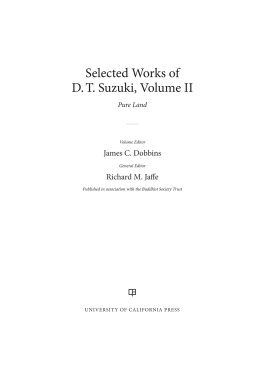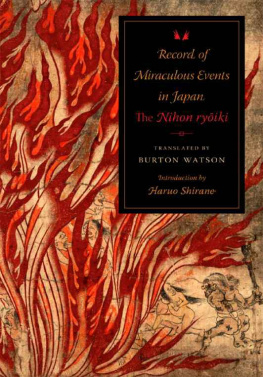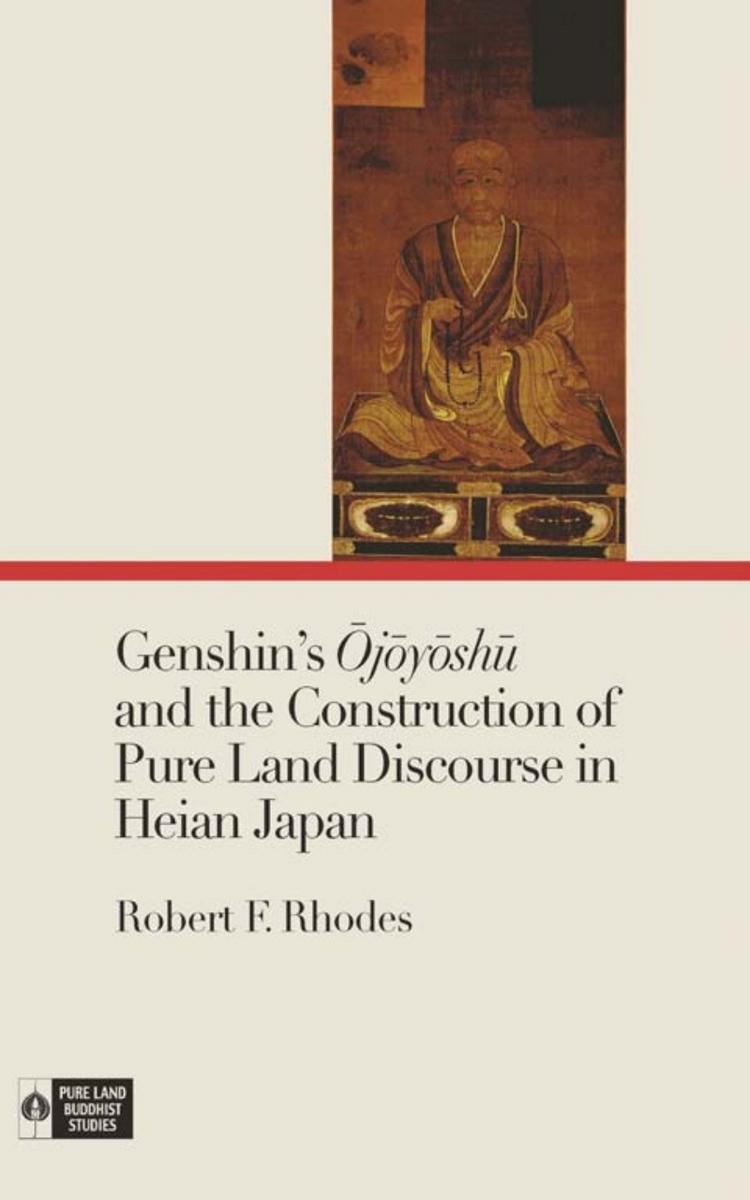
i
Genshins jysh and the Construction of Pure Land Discourse in Heian Japan
ii
Pure Land Buddhist Studies
a publication of the Institute of Buddhist Studies at the Graduate Theological Union
EDITORIAL BOARD
Richard K. Payne
Chair, Institute of Buddhist Studies at the Graduate Theological Union
Carl Bielefeldt
Stanford University
Harry Gyokyo Bridge
Buddhist Church of Oakland
James Dobbins
Oberlin College
Jrme Ducor
Universit de Lausanne, Switzerland
Paul Harrison
Stanford University
Anne Klein
Rice University
David Matsumoto
Institute of Buddhist Studies at the Graduate Theological Union
Scott Mitchell
Institute of Buddhist Studies at the Graduate Theological Union
Eisho Nasu
Ryukoku University, Kyoto, Japan
Jonathan A. Silk
Universiteit Leiden, Leiden, The Netherlands
Kenneth K. Tanaka
Musashino University, Tokyo, Japan
iv
Copyright
2017 Institute of Buddhist Studies
All rights reserved
Printed in the United States of America
22 21 20 19 18 17 6 5 4 3 2 1
Library of Congress Cataloging-in-Publication Data
Names: Rhodes, Robert F., author.
Title: Genshins Ojoyoshu and the construction of Pure Land discourse in Heian Japan / Robert F. Rhodes.
Other titles: Pure Land Buddhist studies.
Description: Honolulu: University of Hawaii Press, [2017] | Series: Pure Land Buddhist studies
Identifiers: LCCN 2016048661 | ISBN 9780824872489 (cloth; alk. paper)
Subjects: LCSH: Genshin, 9421017. jysh. | Pure Land BuddhismDoctrines.
Classification: LCC BQ8549.G464 O35373 2017 | DDC 294.3/9260952dc23 LC record available at https://lccn.loc.gov/2016048661
The Pure Land Buddhist Studies series publishes scholarly works on all aspects of the Pure Land Buddhist tradition. Historically, the series includes studies of the origins of the tradition in India, its transmission into a variety of religious cultures, and its continuity into the present. Methodologically, the series is committed to providing a venue for a diversity of approaches, including, but not limited to, anthropological, sociological, historical, textual, biographical, philosophical, and interpretive, as well as translations of primary and secondary works. The series will also seek to reprint important works so that they may continue to be available to the scholarly and lay communities. The series is made possible through the generosity of the Buddhist Churches of Americas Fraternal Benefit Association. We wish to express our deep appreciation for its support to the Institute of Buddhist Studies.
University of Hawaii Press books are printed on acid-free paper and meet the guidelines for permanence and durability of the Council on Library Resources.
vii
Series Editors Preface
Genshin has long been acknowledged as having played an important role in establishing Pure Land praxis in Japan. But scholars have treated him largely as a forerunner who, once acknowledged, can safely be ignored.
Robert Rhodes study presents a different picture. In Japan prior to Genshins jysh only a few short works on Amida were composed, and these did not distinguish Amida from the other buddhas and bodhisattvas of the Tendai pantheon. The jysh was the first major work created in Japan to present a Pure Land praxis, and it did so by crystallizing a set of ideas and practices around the figure of Amida. As a Tendai monk Genshin naturally cast his work in the framework of Tendai praxis, and this made the jysh accessible to other Tendai monks such as Hnen and Shinran two centuries later.
In his introduction, Rhodes makes an important methodological point when he says that failing to recognize Genshins involvement with the entire range of Buddhist thought and practice not only fails to do justice to the breadth of Genshins intellectual achievements but also makes us lose sight of the historical and intellectual milieu in which he developed his Pure Land system (p. ). To comprehend Genshin we need to view him in his own context. This means grasping the teachings with which he was familiar and to which he was responding: He was not writing for us, so we need to take into account his own understanding of what was known and believed by those for whom he was writing.
Rhodes carries out this essential task in the first part of his study, and it is key to the revisionist character of his work. As he points out, Hnens interpretation of Genshins teachings on nenbutsu has become normative and accepted without examining Genshins thought. While Genshin did lay the foundation for later developments by Hnen and Shinran, Rhodes argues that Genshins thinking was also reinterpreted to accord with a new set of doctrinal emphases. Because Hnens understanding of Genshins contribution to Pure Land has been accepted as adequate, the study of Genshin himself has appeared unnecessary. If we are to perceive Genshins own formulations of Pure Land praxis, we need to distinguish between Genshin per se and Hnens interpretation of viii Genshin. Given the history of sectarian interpretation, this distinction is not as obvious as it may seem.
The willingness to ask questions that supposedly have already been answered is what makes progress in the historical study of the Buddhist traditions possible: Rhodes shows us the value of questioning the conventional wisdom of our field. His study of Genshin is an important contribution to scholarship, and we are pleased to include it in the Pure Land Buddhist Studies Series.
ix
Acknowledgments
The year 2017 marks the thousandth anniversary of Genshins death and it is a great honor to be able to publish this book in this year. A number of people have helped me in writing this volume and I would like to acknowledge my debt to them here. I must first thank Alfred Bloom and David W. Chappell, who introduced me to the study of Buddhism while I was an undergraduate at the University of Hawaii. Band Shjun, Furuta Kazuhiro, Mitsugiri Jikai, and Fukushima Ksai were inspiring mentors at tani University and Masatoshi Nagatomi was a superb teacher at Harvard University. I would also like to express my gratitude to Lucia Dolce, Paul Groner, Linda Penkower, Martin Repp, and Jacqueline I. Stone for their friendship and, especially, for their encouragement they gave me at the many times when I felt like giving up writing this book. x
Introduction
The teaching and practice for birth in the Land of Supreme Bliss are the eyes and legs for (people who seek buddhahood in) the defiled Latter Age.
Preface to the jysh
The jysh (Collection of Essential [Passages concerning] Birth [into the Pure Land of Amida Buddha]) is one of the most well-known works in the history of Japanese religions. It has been characterized as being at once a practical manual, a comprehensive doctrinal synthesis, and an inspiring call to faith and practice. Completed in 985 by the Japanese Tendai monk Genshin (9421017; also known as Eshin Szu , or Bishop of the Eshin Cloister), it became the formative text of Japanese Pure Land Buddhism.
Pure Land Buddhism is one of the most popular forms of Buddhism in Japan today. Its distinguishing feature is devotion to a savior buddha called Amida , who is said to reside in a paradise-like Pure Land called the Land of Supreme Bliss (Sukhvat in Sanskrit and Gokuraku in Japanese) lying far to the west. Furthermore, it is also claimed that by engaging in various practices, especially the nenbutsu (literally buddha mindfulness), or the spiritual exercise of focusing the mind on this buddha, we can be born in Amidas glorious Pure Land after we die. Hence, as the buddha who looks after our postmortem welfare, Amida became, and still remains today, one of the most revered figures in the Buddhist pantheon. Eventually, some two hundred years after Genshin, Amida became the center of an independent Buddhist religious school in Japan when Hnen (11331212) established the Jdosh (Pure Land school) during the Kamakura period (11851333). Hnens Jdosh, as well as the Jdo Shinsh (True Pure Land school, popularly known as Shin Buddhism) founded by Hnens disciple Shinran (11731262), is now among the largest and most influential Buddhist denominations in Japan.

